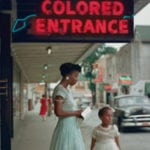 Weird Stuff
Weird Stuff  Weird Stuff
Weird Stuff  Mysteries
Mysteries 10 Tragic Disappearances and Deaths in Joshua Tree National Park
 History
History 10 Ways Childhood Really Sucked in the Old West
 Music
Music 10 Name Origins of Famous Bands from the 1990s
 Religion
Religion 10 Biggest Turnarounds by the Catholic Church
 Weird Stuff
Weird Stuff 10 Unbelievable Times Laws Had Unintended Consequences
 Humans
Humans Ten Historic Women Who Deserve Way More Credit Than They Got
 Movies and TV
Movies and TV 10 Films That Spawned Major Lawsuits
 History
History Ten Times Towns Were Wiped Off the Face of the Earth
 Creepy
Creepy 10 of the Most Disturbingly Haunted Public Houses in the UK
 Weird Stuff
Weird Stuff 10 Niche Subcultures That Are More Popular Than You Might Think
 Mysteries
Mysteries 10 Tragic Disappearances and Deaths in Joshua Tree National Park
 History
History 10 Ways Childhood Really Sucked in the Old West
Who's Behind Listverse?

Jamie Frater
Head Editor
Jamie founded Listverse due to an insatiable desire to share fascinating, obscure, and bizarre facts. He has been a guest speaker on numerous national radio and television stations and is a five time published author.
More About Us Music
Music 10 Name Origins of Famous Bands from the 1990s
 Religion
Religion 10 Biggest Turnarounds by the Catholic Church
 Weird Stuff
Weird Stuff 10 Unbelievable Times Laws Had Unintended Consequences
 Humans
Humans Ten Historic Women Who Deserve Way More Credit Than They Got
 Movies and TV
Movies and TV 10 Films That Spawned Major Lawsuits
 History
History Ten Times Towns Were Wiped Off the Face of the Earth
 Creepy
Creepy 10 of the Most Disturbingly Haunted Public Houses in the UK
10 Various Moments In The History Of Prostitution
The world’s oldest profession (or so they say), prostitution is as old as it is provocative. It’s safe to say that prostitution has been around as long as civilization itself. It has almost always come with the territory of debauchery, sex, violence, drug and alcohol use, and wild times; the pleasures of the flesh, it seems, are inseparable. Contrary to popular belief in many places throughout the world, especially the United States, prostitution is in fact a legal enterprise.[1] Prostitution has a rich history (double entendre fully intended), and a lot of money has been made selling the world’s alleged oldest product: sex.
Prostitution actually offers its clients a lot more than just sex, as is noted by some: It offers a variety of types of sexual experiences otherwise not available, such as the ability to live out fetishes and to experience kinks otherwise unavailable with traditional partners, the ability to have sex in secret without the risk of a full-fledged affair, the ability to cut to the chase and not spend valuable time that a real relationship often demands. In fact, prostitution certainly has its merits, especially if done how it is in many countries: safe, regulated, and medically assisted. Often, you’ll hear that more people are for the legalization of prostitution than against it. Moral questions aside, prostitution has been with us a long time and will be around for a long time to come. Here are ten parts in the long, rich history of prostitution.
10 Brothels In Babylon
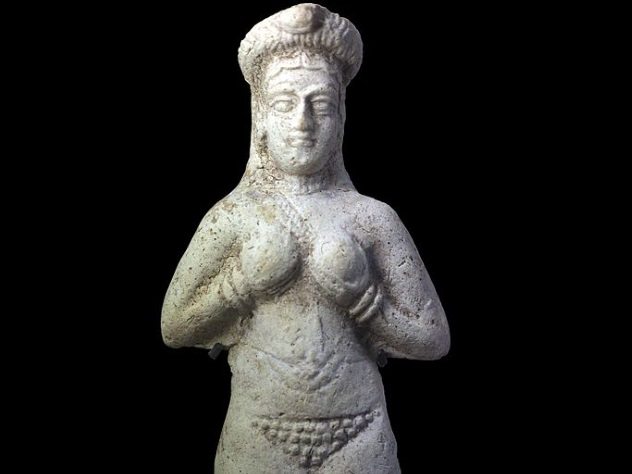
What would the world be without prostitutes and the laws to govern them? Probably quite sexually frustrated, to say the least. While it’s possible that prostitution has been around since the dawn of time, coming along with the tribes of hunter-gatherers as soon as man could first trade his piece of the communal meat for a piece of personal sex, real documentation of prostitution hails back to the famous city of Babylon in ancient Sumer. According to Herodotus, who much of our beliefs about history come from, Babylon may have had temples set up for prostitution in the name of the gods. Religion and prostitution have long been intertwined, and a practice known as “cult prostitution” is even mentioned in the Christian Bible. It all had to start somewhere, and Babylon is probably the first major hub of sex for sale.[2]
While we tend to think of prostitution as sex for money only, it theoretically can happen where sex is exchanged for any number of goods or services, and in the case of ancient Babylon, it was most likely given in exchange for perceived religious and spiritual purity. This general idea isn’t actually so rare through history. During the Middle Ages in Europe, prostitution was actually seen as necessary for a virtuous, holy life.
9 The Code Of Hammurabi
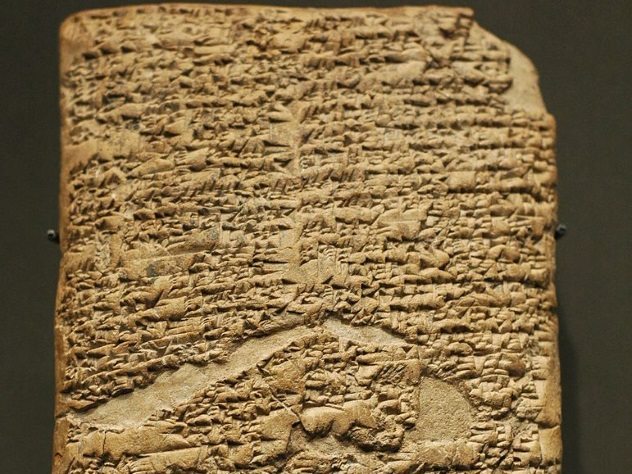
Dating back to the reign of Hammurabi (1792–1750 BC) is one of the oldest sets of laws on Earth: Hammurabi’s Code, or the Code of Hammurabi. The Code of Hammurabi dealt with a lot of different topics, such as economics and commerce, civil and criminal laws like theft, laws regarding the official marriages of the day, and, of course, prostitution. Covering prostitution, the Code of Hammurabi says:
If a “sister of a god,” or a prostitute, receive a gift from her father, and a deed in which it has been explicitly stated that she may dispose of it as she pleases, and give her complete disposition thereof: if then her father die, then she may leave her property to whomsoever she pleases. Her brothers can raise no claim thereto.[3]
This line is especially telling, in that it reinforces the notion that the first major metropolitan city with thriving brothels was the ancient city of Babylon.
8 Ancient Greece
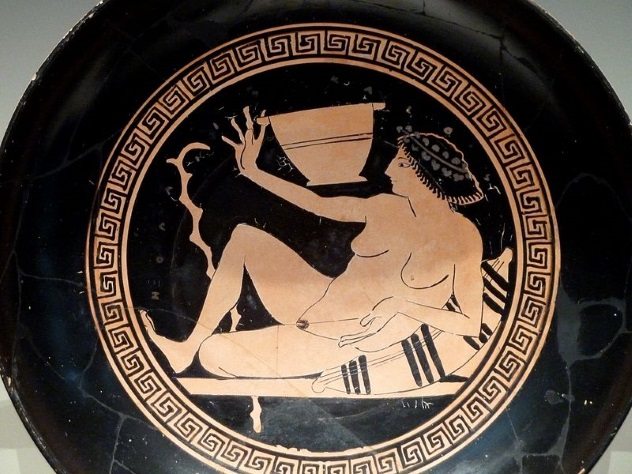
Ancient Athens was a major trade hub of the known world of the day, from the Archaic Period a all the way up until the Classical Period, the time of Socrates, Plato, and Aristotle, on the tail-end of Athenian democracy. Prostitution provided a means of entertainment for long-traveled and weathered traders who had been out on the open seas. Athens was, to be blunt about it, a den of prostitution and lively festivities, parties that wouldn’t really be matched in Western culture until the rise of the Roman Empire. Ancient Athens, known for its philosophical stoicism and wisdom, was really just one giant party.
The sex trade was a booming hit in Athens, and both the tact and etiquette were something that became a bit of an art to the Athenian women who practiced it. Women even wore shoes with the words “follow me” written in Greek on the bottom so that they’d track those words behind them in the sand as an advertising gimmick to attract paying customers. Considering that most ancient Athenian men didn’t marry until age 30, their sex lives must have been built and predicated upon prostitutes as a way to have no-strings-attached sex that wouldn’t tie them down for life.[4]
The Athenian brothels were as various as the customs of any major international trade hub, and many of the slaves captured in conquests would end up being the exotic women found in these locations. This, however, wasn’t the only type of prostitution of the day. There were the common streetwalkers, conducting business in back allies and the bustling streets of Athens. These women were (appropriately) known as pornai.
There were also the hetaerae, the more intellectual and intelligent free-woman breed of prostitutes in the city. These women were strong, artful intellectuals who were sometimes even literate and had some amount of social and political power and prestige. They were basically the ancient equivalent of the modern escort and would escort men to large gatherings and drinking parties. Like today, the ancient Greeks had their very own version of the sugar daddy, with many prostitutes being live-in concubines and escorts, the favorites of which were shared among friends.
7 Ancient Rome
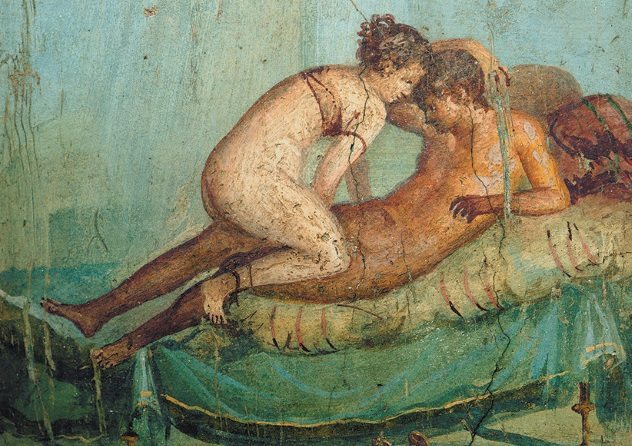
What happened in ancient Greece definitely didn’t stay in ancient Greece. Rome was the mightiest empire of the ancient world, and it borrowed heavily from ancient Greece, so much so that the two cultures were extremely similar; they were practically intertwined for much of Roman history. There was a festival called Floralia, which was basically the Roman version of Mardi Gras, where people would pour out into the city and throw down. There was dancing, music, and pretty much everything you’d expect from a modern rave festival, including prostitution, of course. Prostitutes were not only plentiful, but they were free to walk around and practice their trade in the open, especially at such festivals. These festivals were a deeply engrained part of Roman culture.
Brothels were a regular part of higher-class Roman life. They housed their women and saw their clients with as much freedom and luxury as any other business of the day, having legal support and social acceptability from about 200 BC to AD 250, which is a long time, for an empire.[5] In Pompeii, the famous city inundated by volcanic rock, sexuality, brothels, prostitution, drinking, and sex orgies were not only happening but were common. Brothels were commonly located near residential areas of those who moved among the upper echelons of society. Pompeii was much like other cities of ancient Rome, in that sex was everywhere—from forks, knives, and bowls decorated with nude people doing lude acts to phallic statues to paintings and drawings of explicit sexual content. Rome didn’t fear sex; she actively embraced it.
Roman society valued active pleasure, as in the seeking and taking of pleasure, rather than passive pleasure, e.g. pleasure by happenstance or, more simply, “the absence of pain.” This is part of what made Rome ripe for, and rife with, sexual debauchery and deviance. It was a den of sex that culminated in some of the largest orgies in history, with Emperor Caligula commanding massive sex parties on barges custom-built for such scandalous affairs.
6 The Prostitute Empress
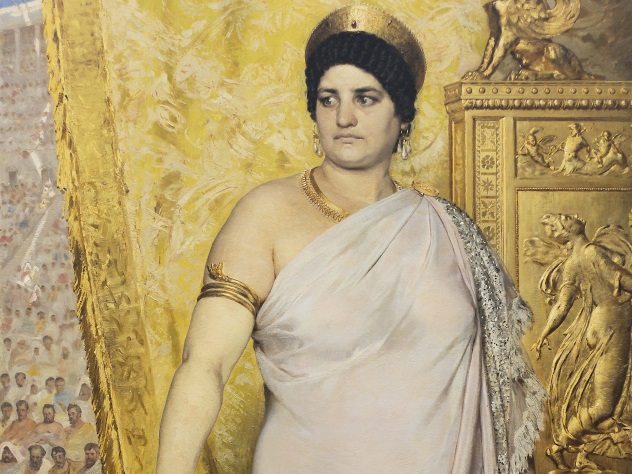
All this talk about the obviously lavish and overdone Roman sex life brings us to another startling figure in the history of prostitution: Valeria Messalina. Valeria Messalina was a woman of Roman nobility and the third wife to the Emperor Claudius. She would later become the mother of Britannicus, the step-brother of Nero, who would poison Britannicus in a move that earned him the throne. She was as scandalous as any politician of the day; she made some serious political moves and certainly pissed a few people off. But she was also the empress who eventually became a prostitute—at least for a night, according to some sources.
Some sources also suggest that Messalina was also a prostitute in her spare time, though this may be gossip and should be taken with a grain of salt. It has also been claimed that a sex competition took place between Messalina and Scylla, a local famous prostitute whom Messalina was envious of. Messalina apparently had a very large sexual appetite and used it to consolidate power in a time of political strife. Her and the most famous prostitute in Rome would go head-to-head to see who could have sex with the most people in one single night. And Messalina actually won, apparently, according to Pliny the Elder, by sleeping with a full 25 more people than the top prostitute of the day.[6]
5 The Middle Ages
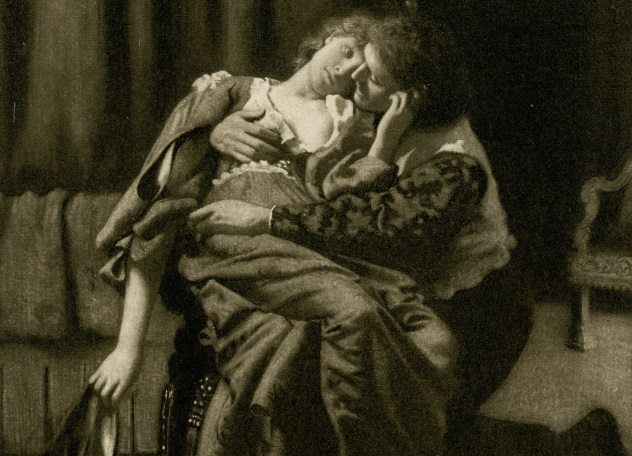
Contrary to popular belief, the Middle Ages weren’t a particularly sex-prohibitive time. While the dominant ideology of the day in Europe was definitely Christianity, along with its ideas of modesty and virtue, medieval Europe saw sex as many others see it, as a natural part of life. Without it, the ancestors of medieval Europe wouldn’t be here, after all, and there are many of them. Brothels were as much a part of medieval life as they were in places like Greece and Rome. What started out as a relatively rare practice, mainly because prostitution is almost exclusively a feature of city life and early medieval Europe was largely rural, later became a booming trade yet again, with women selling their bodies to the highest bidder.
The church, meanwhile, took a strange, and rather understanding, stance: They held that men needed to satisfy their urges and that the “good women” of their cities needed to be protected from such men, so they viewed prostitution as largely a lesser evil than the rest.[7] It almost became a necessary evil, in their eyes. It would later actually be prescribed by medieval culture to cure many ailments that were thought to be caused by pent-up sexual tension. The church would eventually come to not only accept and turn a blind eye to the practice but to actually endorse it.
Prostitution was pervasive throughout medieval Europe, and sex was just as much everywhere as it was in former times, except the literature. Medieval people did it just as much as their ancient counterparts did, and our contemporaries do. They just didn’t talk about it nearly as much, and when they did, they referred to it gently with phrases like “to pluck a rose.”
4 Victorian Vice
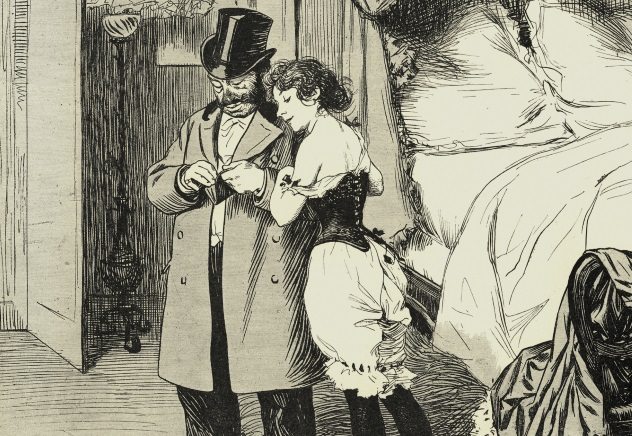
Victorian England, in its heyday of steam engines and imperialism, isn’t exactly something we think of as synonymous with prostitution and rampant sex, but it absolutely was. Just like the Middle Ages in Europe, which gave birth to the Enlightenment era, Victorian England was a brothel owner’s paradise. In fact, prostitution was the highest pay a woman could earn in the day.
There are a ton of juicy facts about Victorian-era prostitution that can be found here, but here are some of the notable ones: There were apparently 80,000 prostitutes living in London alone in the late 1800s. Yet again, brothels were a booming business, and while we tend to think of it as something hush-hush, it was actually legal.[8]
We should note here that Jack the Ripper had no trouble finding, at the very least, his “canonical five” victims among prostitutes and killing them out in the open, unobstructed. Exotic perfumes and dimly lit alleyways were the sights and smells of Victorian London, and Jack the Ripper would show our modern world that prostitution had a dark side: the fact that prostitutes are very susceptible to predators. In modern times, where equality is a prominent feature of our secular belief system, we’ve noted now that prostitutes are human beings who deserve basic human rights, something that’s relatively absent in the literature of antiquity except for by assumption. History didn’t cry over dead prostitutes, and it’s a testament to our expansive modern moral fiber that many of us do.
3 Western Women
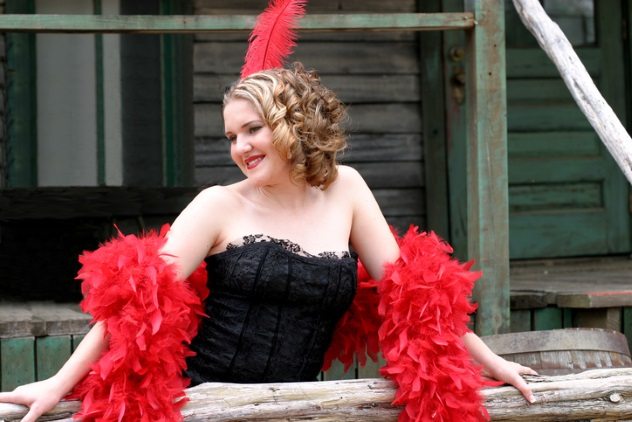
While brothels and prostitution are currently illegal almost everywhere in the United States, it wasn’t always that way. Once upon a time, it was a very socially acceptable practice and extremely common, especially as settlers pushed further westward into America. The road was hard, as North America is a vast, formidable continent with varying terrains, and travelers would need places to relax and find entertainment. The Wild West provided a fertile breeding ground for prostitution to thrive unhindered by rigid law enforcement and strict, puritanical ideologies.
Brothels didn’t just serve their clients sex but also alcohol in large quantities, heroin, opium, and other opiates. Drugs were considered a part of the full Western brothel experience. As many people were just passing through town in search of bigger and better things, chasing dreams out west, many of these establishments also served as hotels as well, offering a room, a woman, and all the alcohol and drugs one could ask for. Western brothels were dens of vice. No wonder there were so many shoot-outs and train robberies.
Often called “parlor houses,” many of these establishments featured a full, open room, a bar, and anywhere between six and 12 prostitutes who a man could choose from during his stay. Some of these women commanded up to $1,000, which was a lot of money in the mid- to late 1800s.[9] Bourbon, liquor, wine, and cigars were often consumed, just like the scenes we see in Western movies. Brothels were a thriving business in the Wild West.
2 The Dark Side Of Selling Sex

Prostitution, as we’ve seen with the rise of the modern killer, has placed women in extremely vulnerable positions when it comes to selling sex. There has been a marriage, since Jack the Ripper, between sexual violence and serial killers on the one hand and prostitution on the other. Prostitutes are often targets of serial killers and the violently sexual in places where the practice is illegal and driven underground. Prostitutes are harder to trace and track; they hang out in an underworld where people don’t talk to the authorities, and they may not have healthy relationships with friends and family memebers who might report them missing to the police or put up missing persons signs.
Robert Yates and Gary Ridgeway were two serial killers from Washington state whose entire careers of bloodthirsty murder were almost solely predicated upon the killing of prostitutes, much like Jack the Ripper had done. In the 1970s and 1980s in England, Peter Sutcliffe, a former gravedigger in his youth, would become a Jack the Ripper copycat, some believe, in killing prostitutes in the Yorkshire area with knives and hammers.
This is why pimps have careers: because prostitutes need protection, at least perceptively. The National Institute of Justice in the United States paints a grim picture of the marriage of prostitution and murder, stating the following:
Researchers have studied homicides of street prostitutes to see if crimes involving one victim (single homicide) differed from those involving two or more victims murdered by the same perpetrator (serial homicides).
A 2001 study found that serial murderers:
-Were almost always motivated by sex.
-Were more sexually aggressive.
-Had deviant sexual interests and active sexual fantasies.
-More frequently planned their activities, such as moving victims to a preselected area or taking clothing from the victim’s body.
-Engaged in rituals and body mutilation.
This study has helped law enforcement officials identify suspects and conduct more efficient investigations.
The profile of the victims was similar in both types of homicides. Most victims were:
-In their late 20s to early 30s.
-African American (60 percent).
-Working in high-crime areas.
-Abused both “on the job” and in their personal lives.
-Involved in prostitution to support a drug habit.[10]
It’s a dark underworld that prostitutes are often forced to work in, and as previously mentioned, drugs, alcohol, crime, and violence often come with the territory.
1 Prostitution Today

Prostitution is currently legal (fully or partially) in the following countries: Argentina, Austria, Armenia, Belgium, Bolivia, Brazil, Canada, Chile, El Salvador, Finland, France, Greece, Guatemala, Mexico, the Netherlands, New Zealand, Peru, Portugal, Senegal, Slovakia, Switzerland, Turkey, Belize, Colombia, Costa Rica, Honduras, Hungary, Indonesia, Israel, Italy, Panama, Paraguay, the United Kingdom, Uruguay, Venezuela, and in some areas within the United States, like Nevada.[11] Prostitution today is largely split by country, with the act being legal in a number of European countries and New Zealand, while others have quasi-legal prostitution, and then there are still places where it’s totally illegal.
As the famed comedian George Carlin once pointed out, it is odd that prostitution is illegal in many parts of the world today: Selling is legal, and sex is legal—so why isn’t selling sex legal? You’d figure this kind of mind-numbing paradox would dawn on us as being as silly as it is without us needing a comedian to point it out, but sadly, it doesn’t. There is one dark part of the modern sex trade which is unfortunately all too alive and well: human trafficking, which is a very real, very global problem. The United Nations says about human trafficking, “Trafficking in persons is a serious crime and a grave violation of human rights. Every year, thousands of men, women and children fall into the hands of traffickers, in their own countries and abroad. Almost every country in the world is affected by trafficking, whether as a country of origin, transit or destination for victims.”
Some have argued that the legalization of prostitution is the best cure to combat human trafficking, for those countries of the world, like the United States, where prostitution is illegal. There is an aggressive chasm between two factions of ideology: those who are emphatically and strongly against prostitution and those who think it’s better, safer, and more reasonable to not drive the practice underground by criminalizing it. Websites like Backpage and Craigslist may find themselves under considerably more scrutiny than they already do for having to police sex trafficking and prostitution.
There are also those who have argued that legalization opens the door for further trafficking; some believe that it would just simply make it easier for predators to get their hands on children and other vulnerable individuals and kidnap them, selling them to the sex trade. The debate is currently a hot one. One thing that is for certain is that prostitution isn’t going anywhere anytime soon, and we as a world would be wise to come up with a way to deal with this fact in such a way that maximizes safety and minimizes unacceptable predatory practices.
I like to write about the darker sides of human history. Still own and operate Serial Killer Memes, Murderworks Horror, Beautifully Disturbed, and many more Facebook pages, with a current total post-reach audience of about 500,000.
Read more about prostitution through history on Top 10 Prominent Prostitutes In History and 10 Tales Of Prostitutes In War And Espionage.



